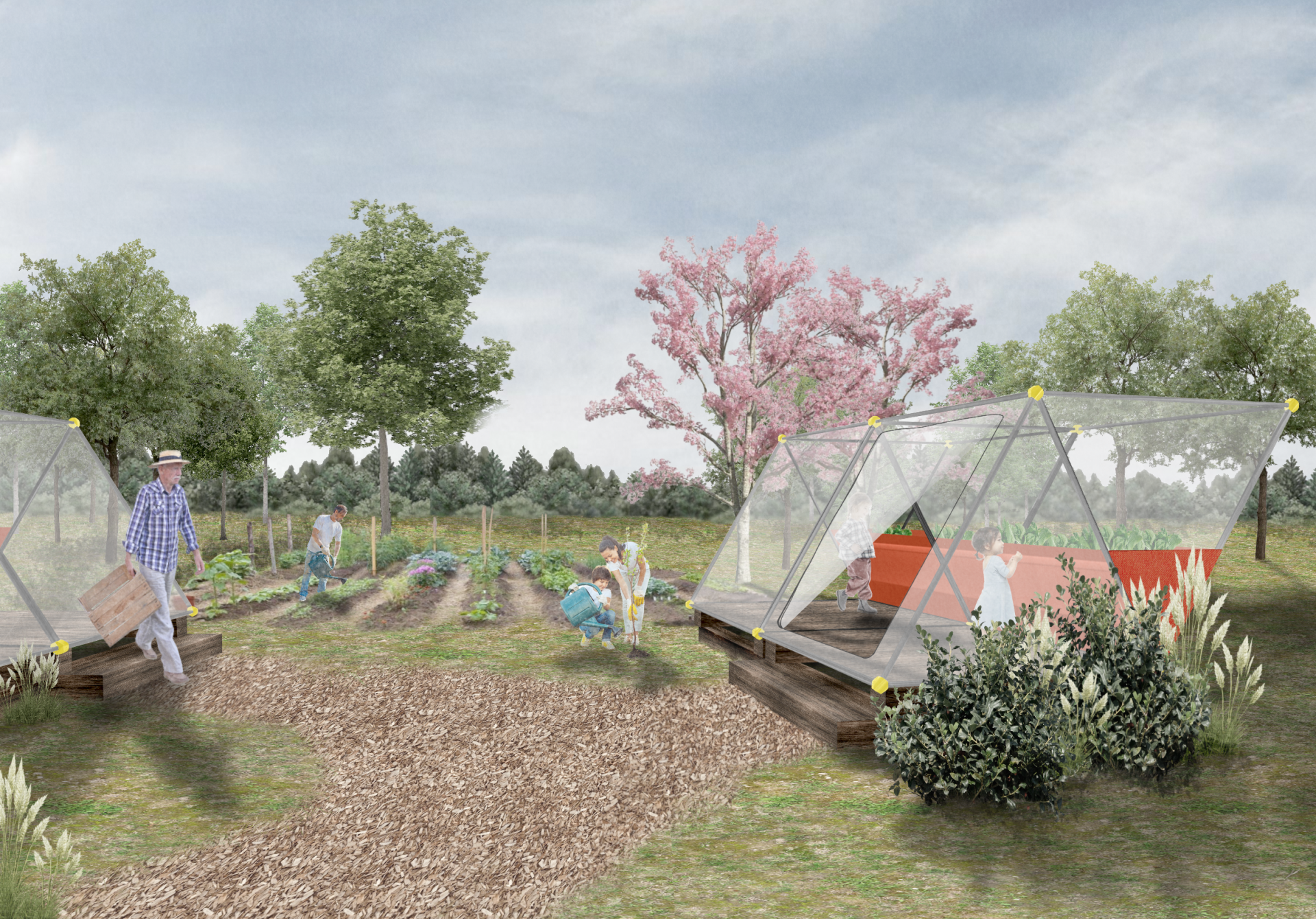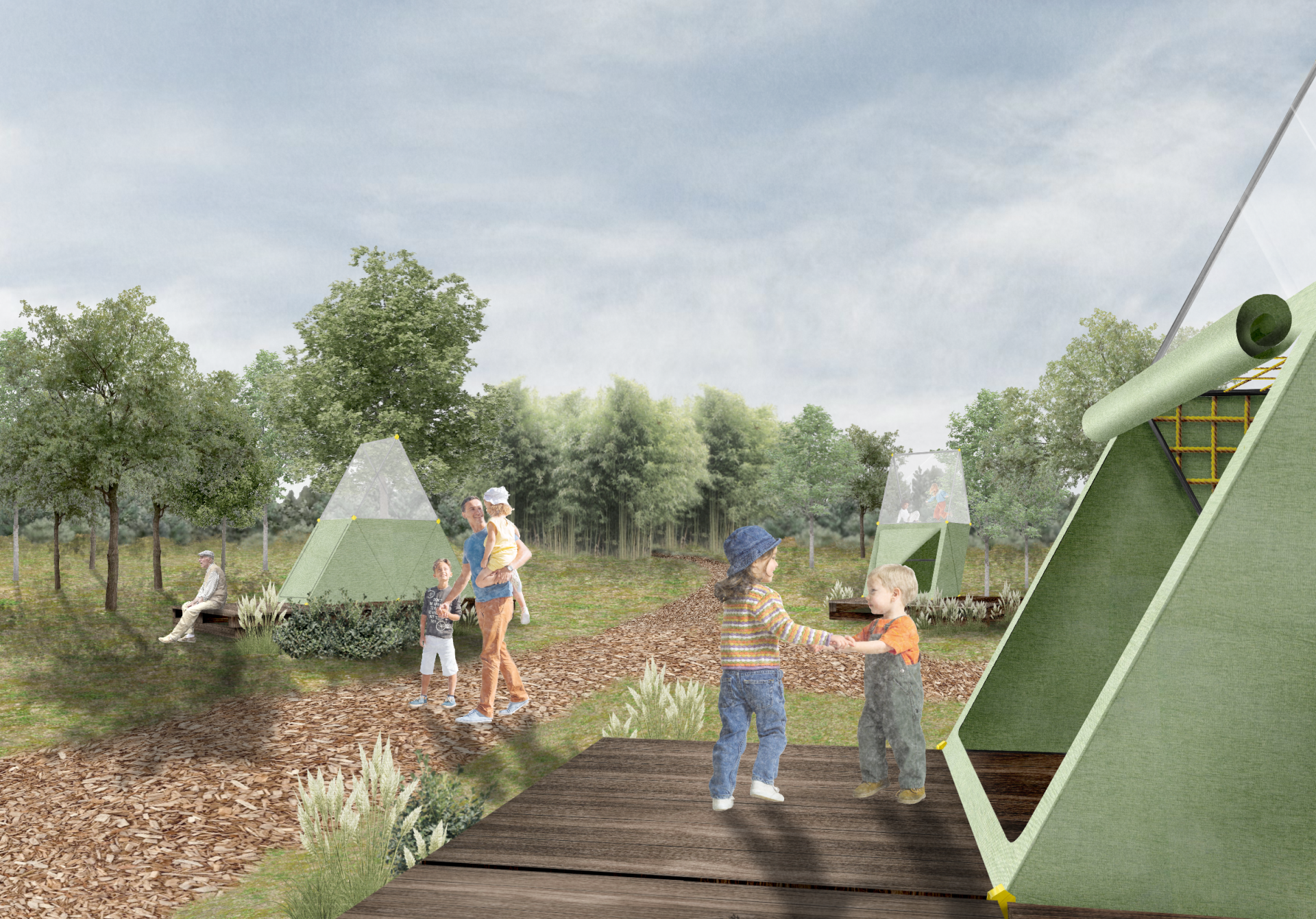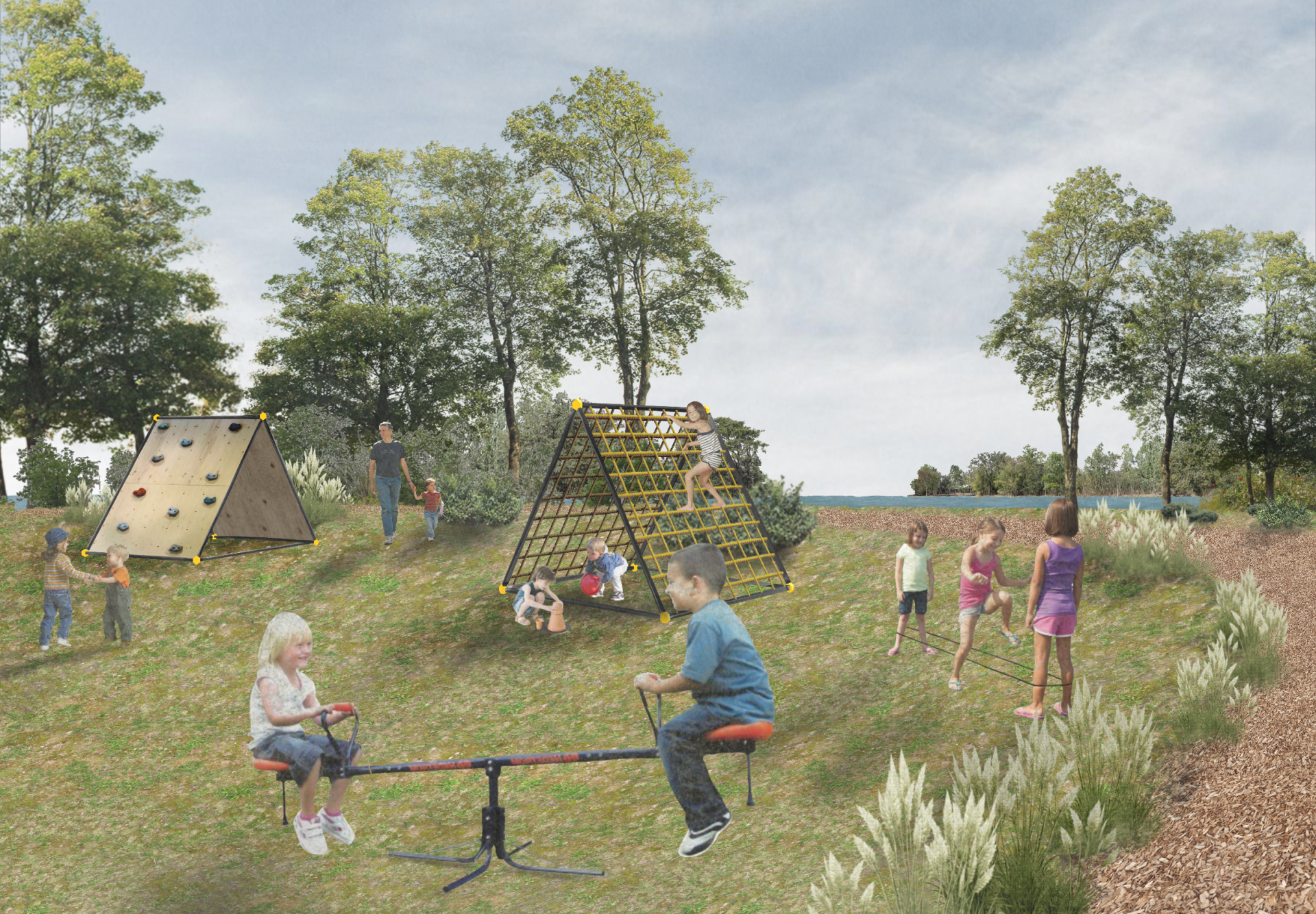Re-Nature
Basic information
Project Title
Re-Nature
Full project title
Re-Nature, a new system of Greenness
Category
Reconnecting with nature
Project Description
A modular and sustainable furniture system dedicated primarily to young people and families in the context of the Vignole (Venice, Italy). A civic space that offers accommodation, educational paths, games, playful and adventurous activities, through which education in sustainability, movement and contact with nature are provided. The project, moreover, provide for the lack of green areas in Venice, thus becoming a meeting place for young Venetians.
Geographical Scope
Local
Project Region
Vignole Island, Venezia, Italy., Italy
Urban or rural issues
Mainly rural
Physical or other transformations
It refers to a physical transformation of the built environment (hard investment)
EU Programme or fund
No
Description of the project
Summary
A civic space dedicated primarily to youth and families in the context of the Vignole. A modular and sustainable furniture system that offers accommodation, educational paths, games, and playful and adventurous activities, through which education in sustainability is provided, including through movement and contact with nature. The space is self-supporting through renewable energy resources and is sustained through payment for accommodation, access to activities, and the sale of local products. It provides jobs for local residents, with the goal also of redeveloping an area, today, with no identity. Through the project, moreover, the lack of green areas in Venice is made up for, thus becoming a meeting place for young Venetians. Finally, the system is designed in such a way as to make this service replicable in any natural area to be redeveloped.
Key objectives for sustainability
Re-Nature was designed with the intention of being a sustainable system, this is due to the modular feature of the components. Indeed, the structures are recyclable, reusable, reconfigurable and redesignable. The recyclability is given by the adoption of easily recyclable and environmentally sustainable materials for the structures in question, this choice was made in order to turn a special attention towards the respect of the planet. As for the reuse of the modules, they can be relocated to other places to fulfill other functions, for example, in the mountains as a shelter or in a playground as a playful game. Reconfiguration is provided by the composition of the modules, which consists of elements with versatile shapes that can be easily configured into multiple different compositions. Finally, redesign, which is one of the strengths of this project comes from the simplicity of the modules; their shape and material which grant the possibility, once disassembled, to be redesigned to compose new structures with different uses.
Key objectives for aesthetics and quality
Re-Nature offers a whole new experience that alienates from the urban world, the hustle and bustle of everyday life. Through the use of services and facilities, which have been meticulously designed, and aesthetically conforming in their immersion in and respect for nature, the project makes it possible to solve the local problem of young Venetians who have always grown up in a reality devoid of greenery, which has alienated them from nature, causing them to lose the value it offers. The redevelopment of an uncultivated and abandoned land into a civic place where relationships happen through playful activities can be a cultural benefit of a land that is the region's heritage.
Key objectives for inclusion
Re-Nature is a space open to all, with a special focus on young people, offering a unique experience in contact with nature. Users can arrive independently, accompanied by their families or with school groups. Throughout their stay, they will be supervised by tutors and teachers to carry out the activities in total safety. This ensures the birth of a new social model, namely a civic space that aims to establish bonds between people through contact with nature, educational and recreational activities within natural environments to be redeveloped. Placing design-for-all at the center, Re-Nature was designed thinking about accessibility. Economically, for example, the design and materials of the components were designed to make the system as cheap as possible. In addition, admission is free for Venetians, while outside users are charged a small fee necessary to sustain the space.
How Citizens benefit
Through Re-Nature, citizens will have the opportunity to be able to enjoy a new space designed primarily for them, in this way the problem of the lack of green areas in Venice will be solved, thus upgrading an abandoned area rich in natural resources. Users will be able to choose to stay overnight in the planned facilities or spend a day in the company of other young people, practicing organized activities in contact with nature. In collaboration with Veritas, a wholly publicly owned corporation that provides environmental services, the project addresses the need to create a place that does not increase mass tourism but generates a sense of community and repopulates an island that in this period is depopulated. Indeed, the system in addition to providing activities generates new jobs.
Physical or other transformations
It refers to a physical transformation of the built environment (hard investment)
Innovative character
The innovative character of the Re-Nature project is to offer a civic space that reconnects humans with nature. It does this through structures that respect the environment, both for their modularity and versatility and for their propensity to create a physical and spiritual contact with nature, without any kind of comfort. In addition, the energy and water resources are derived from renewable sources, designed according to the conformation of the land, and thus produced on site. Also, the decomposability of the modular structures allows them to be reconfigured in any other place in the world, thus recreating different situations but having the same main goal: to get closer to nature, to love and respect it.
Disciplines/knowledge reflected
The project was born from the interweaving of several disciplines, which have “Design for All” as a common point. After a long analysis on the concept of civic space and a thorough survey done on site, the working team wondered how interior design could best communicate with the world of services, with the aim of adding value to the project and bringing real improvement to the population. During the development phase, knowledge in the field of product design was helpful, enabling the project to be sustainable and low-cost. In addition, many aspects related to the economic sphere were taken into consideration so that the park could be self-sustaining, yet still remain inclusive. Representatives of the various disciplines interacted efficiently and effectively. The common goal is to generate a system that is modular, accessible, and dialogues sustainably with the ecosystem.
How stakeholders are engaged
The parts of interest, taken into consideration, are mainly local. The inhabitants of Venice, especially those living in the Vignole, always demand green areas and places not dedicated to mass tourism. For this reason, Re-Nature is proposed as a project aimed at young people who develop a sense of community through movement and contact with nature, going, in this way, to repopulate a place, neglected and uninhabited so far. In addition, in the concept phase of the project, the requests of the Veritas association were considered, which required the creation of architecture or structures that would not be invasive or ruin the natural environment. Re-Nature, precisely because of its modularity, can be reconfigured and redesigned multiple times, thus respecting the land and its needs.
Global challenges
The global challenges facing the Re-Nature project are challenges concerning the environment and the preservation of it. Protecting and respecting nature is the focus around which the project revolves. In fact, Bringing people closer to nature is a way to raise their awareness more and more and amplify what is their attachment to the environment, to love it and consequently to protect and safeguard it. The project pays attention to sustainability as it takes into consideration a circular economy model and its durability. At the local level, therefore, the system aims to fill the lack of green spaces in the city of Venice by focusing on citizens, their needs and the redevelopment of the Vignole island through a series of activities and services for the community.
Learning transferred to other parties
Re-Nature is designed to be a complete system that can be reproduced in any other public place in the world that attempts to connect humans with nature, should this relationship be lost. Standardized production makes it possible to assemble, disassemble and transport the structures easily and quickly. The coupling that joins the components of the structure is designed in the way that the composition and the assembly are immediate to understand and quick to assemble. Each individual part and component of the structures can be disassembled and used for another function, should the need arise. But not only that, the empty space within the structures also allows the interiors to be used as one sees fit, thus leaving the user free to adapt in the space.
Keywords
Evasion
Education
Ecology
Versatility
Inclusion



